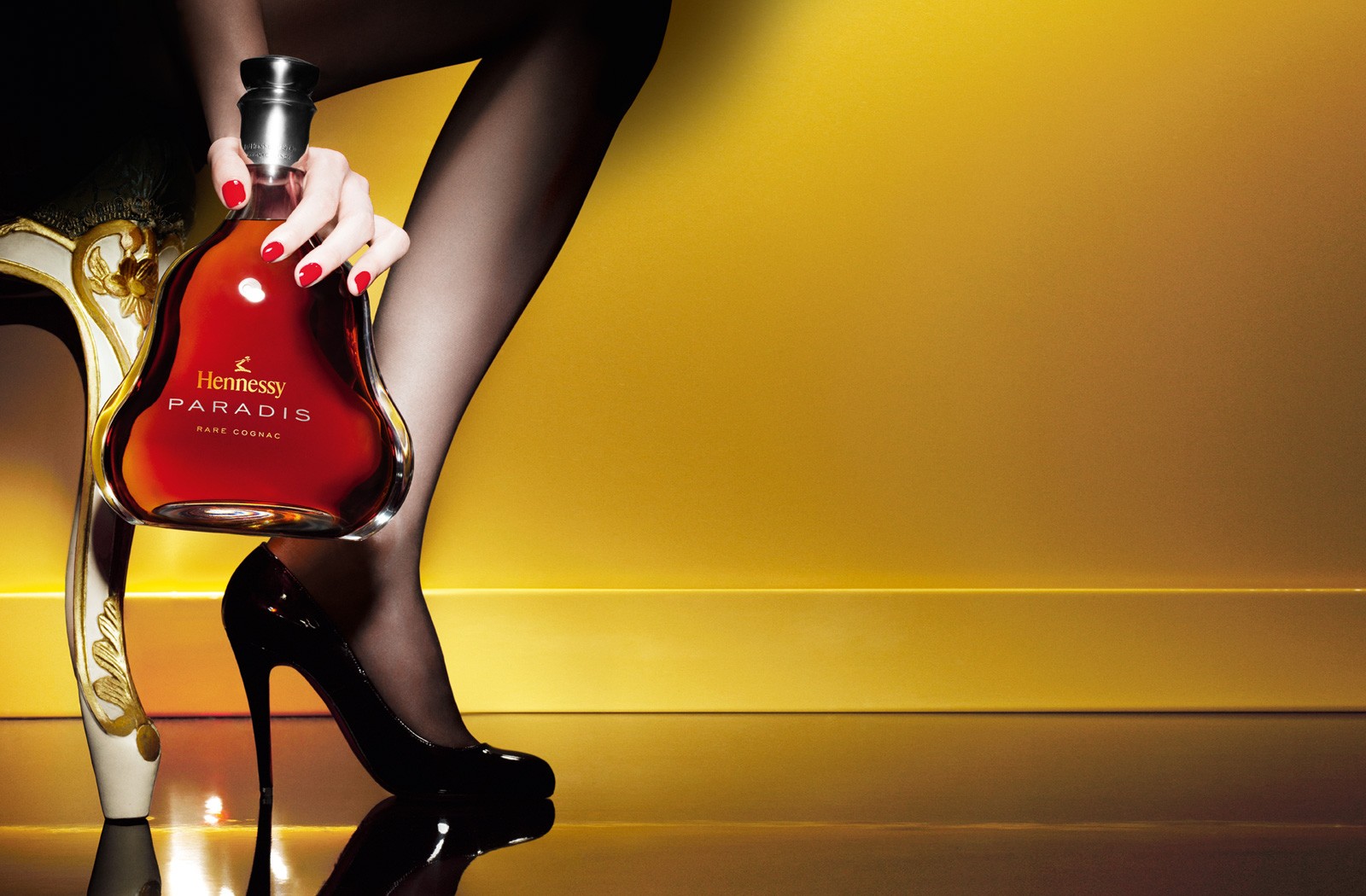The French call it the water of life and both traditionalists and hip hop arrivistes have irons in the fire at the Cognac club.
On a wintry night seeking a slow flame, Sydney’s Hemmesphere nightclub is abuzz with suits, spray tans, short, short dresses and those with a nose for both eaux-de-vie – the building blocks of the finest Cognacs – and joie de vivre. DJs Little Bambalam, Minx and Alley Oop are manning the decks, and beautiful young wait-staff with glittery painted-on masks are serving killer cocktails.
The Hennessy Richonne julep adds to a nip of Cognac quince liqueur, fresh-pear puree, and rhubarb and chocolate bitters. The Hennessy VS crusta marries Cognac with an Italian liqueur, fresh orange and pineapple juice, vanilla syrup and bitters. Sacrilege, no doubt, to a traditionalist who likes brandy after dinner, by a fire, neat and in a balloon glass that encourages a therapeutic swirl or two.
But, then, Hennessy, like many of the luxury brands whose power base has long been the well-aged and well-financed, is nurturing a changing of the guard. Just as Louis Vuitton had Takashi Murakami bring primary-school colours to their handbags, and as Hermès is giving Gen Y lessons in weaving grown-up scarves through their ponytails, the 245-year-old premium Cognac house has been casting its net wider – keeping traditionalists and luxury-seekers happy, developing new markets and honing its street cred along the way.
Rap stars decided to come to the party – uninvited, of course – a decade ago. Snoop Dogg rhymed “jealousy” with Hennessy and Tupac Shakur dubbed it his drink of choice – “They wanna know my role model/It’s in a brown bottle”. Since 2001, when Busta Rhymes released Pass The Courvoisier, dozens of songs referencing Cognac have emerged, several brands have hip-hop ambassadors and suddenly “Remi” and “Henny” are part of the rapper’s lexicon.

Chateau de Bagnolet in Cognac, a home away from home for select Hennessy “friends”. Photo Susan Skelly
Special guests at the exquisite Château de Bagnolet, the Hennessy hideaway for “family and friends of the house” in the heart of France’s Charente region, have in recent times included Kanye West, The Roots and Common, holing up for a spot of R&R and R’n’B. But the chateau is a broad church. On a perfect autumn day last September, a party of Polish MPs had just departed, new entries in a visitor’s book that has included prime ministers, ambassadors, movie stars and assorted taste-makers. Built in 1810 and bought by August Hennessy (grandson of the Irish founder, Richard Hennessy) in 1841, the chateau is a picture-book profusion of begonias, roses, lavender, precision hedges, glassy lakes (with paddlers straight from Central Casting) and velvety lawn. Its style is aristocratic, understated luxury. Rich drapes, expensive wallpapers and plush sofas abound. Breakfast is in a conservatory of anthuriums, orchids and cyclamens, served on Bernardaud Limoges porcelain.
Just as the Hennessy Artistry nights at Sydney’s Hemmesphere and other establishments around the globe are all about blending music, art and spirits, the Cognac house’s future – given that its older clientele are more likely to turn up in the obituary pages than in the social pages – relies on navigating a careful balance between tradition and the 21st century.
The strategy is a coalface one at both ends of the spectrum. The chateau’s head chef, David Fransoret, recently returned from wooing connoisseurs and would-be connoisseurs over several big-ticket dinners in Taiwan (between 300 and 500 guests a sitting). To showcase Cognac’s culinary reach, he marinated a pork cheek confit in Hennessy XO; used it in a truffle sauce for the fish and in a chocolate tart. Fransoret is a passionate advocate, deconstructing the flavour and vapour components of Cognac into categories such as silky, toasty, smoky and acidic, bitter and fresh, and chocolate, creating a scientific guide to food and Cognac matching. He has plans to visit Ireland, China, Indonesia and Russia to preach the gospel. Outside the US, the Asian market is one of the most lucrative. In China, Hong Kong and Taiwan, Cognac is a status symbol, expressing power and influence; it is an accessory to business deals, birthdays and weddings.
From a lookout in a vineyard of ugni blanc grapes just outside the town of Cognac, the Charente countryside shines. It’s 450km to Paris in the north, the Atlantic is an hour away, 60km to the west; to the east is the town of Angoulme, and south-west is the northern border of Bordeaux. Charente, with its chalky geography, is said to be the second sunniest region in France after the Riviera. Farmers have been making wine here for 2000 years. The region produces about 45 million litres of pure alcohol each year.

Fine oak, hard work and artisanal skills go into the barrels that will produce the finest Cognacs. Photo Susan Skelly
The Charente is home to six crus, or growing regions. Hennessy draws its eaux-de-vie from four of them: Grande Champagne, Petite Champagne, Borderies and Fins Bois. Cognac, named for the town in the Charente, is a brandy – a distillation of grapes. Some 73,000ha are planted with the grapes that will become Cognac – colombard and folle blanche, but mostly the acidic, aromatic ugni blanc.
There are more than 300 brands of Cognac, two dozen produced in significant quantities. Hennessy distils its wines twice, taking the “heart” from the second distillation and leaving it to age in French limousin oak barrels. What Hennessy does differently from other producers is to age separately each eau-de-vie, then blend, rather than blend and then age. Other factors in the end result are ageing time, barrels used and the origin and quantity of the eaux-de-vie selected.
Further south near Toulouse, you get Armagnac, also a brandy, but one that is distilled once not twice, and made from single-vintage wines not blends. In Italy, grappa is the brandy of choice, but made from distilled grape must, the by-product of wine making.
Hennessy has a capacity of some 300,000 barrels busy ageing in the region, wisely shared among 50 chais or storehouses. Each is marked with batch number, vintage, growing area, name of vine grower and the number of barrels in batch.

Hennessy has a capacity of some 300,000 barrels ageing in the region, shared among 50 storehouses. Each is marked with batch number, vintage, growing area, name of vine grower and the number of barrels in batch. Photo Susan Skelly
There’s a tasting committee (not much turnover in this job) whose members have responsibilities for different areas – oak-barrel ageing, relationships with wine growers, the distilleries, the winemaking process. Every day at around 11am, the group of eight meets to taste from 40 to 80 eaux-de-vie, and make decisions on, for example, whether the batch needs to be transferred from young to seasoned barrels to control the oak influence.
In the region, about 20 million bottles of Cognac are lost to evaporation each year. They call it “the angels’ share”, but there is still enough left to produce an estimated 60 million bottles a year. The US is the biggest market in volume, with Hennessy VS being the biggest seller in that market. However, China spends the most, courtesy of the demand for the pricier Hennessy VSOP and Hennessy XO. Ireland and Russia are the biggest importers in Europe, although some markets in Asia, such as Taiwan are actually bigger. Emerging markets include Nigeria and South Africa.
According to Hennessy, the tulip glass has always been the best vessel to taste Cognac neat. It is the glass used by the tasting committee and the master blender to taste the eaux-de-vie every day, and has been for decades. Some claim it “better respects the aromas”. In Australia, the glassmaker Riedel sells the Cognac Hennessy glass ($90 a pair) as part of its Vinum range.
This is the pecking order: Hennessy VS, aged two to eight years, blends together about 40 eaux-de-vie; VSOP, aged four to 15 years, 60; XO, aged 10 to 30 years, 100; Paradis, aged 25 to 130 years, 100; Richard Hennessy, aged 40 to 200 years, more than 100. Bottled in a Baccarat crystal decanter with a silver stopper, the latter costs €2000 ($2800).
There is also the sex object, Ellipse – a blend of the seven of the most highly prized eaux-de-vie – from 1830 to 1995 – nominated by each of the seven master blenders from the Fillioux family, who have served the house since its inception. The Ellipse, also in a crystal decanter, designed with a fingerprint-style imprint for each of the master blenders, was recently sighted in the Bar at the Plaza Athenee in Paris with a €6800 ($9650) price tag. There are only about 2000 bottles of it in existence.
Highly desirable, too, is the 1865 Private Reserve made from 11 eaux-de-vie. For the 100th anniversary of Jas Hennessy & Co in 1865, Maurice Hennessy requested from master blender Emile Fillioux a celebratory Cognac. In 2004, Gilles Hennessy asked Yann Fillioux, the current master blender, to re-create the “centennial Cognac” for Hennessy connoisseurs. It is a limited edition, a blend of 11 eaux-de-vie aged up to 50 years, from Grande Champagne, exclusively and rigorously selected for their floral and fruity character.
At the Hennessy HQ on the banks of the Charente River, Vincent Perrin, one of the tasting committee, looks a little like a distracted poet. In a lecture-style tasting room, he has seven glasses of instruction in front of him. We’re travelling from the top drawer Richard Hennessy down through pure eaux-de-vie to their pure alcohol precursor – swirling, sipping and savouring our way through the line-up.
Perrin caresses the Richard Hennessy in his mouth. Is it persistent or short, he asks? There’s a 50 per cent chance of getting this right. The wrong answer reveals the novice and, one suspects, prompts the speed date with Hennessy that ensues.
Says Perrin, “This is slinky, smooth, in comparison with the Richard Hennessy. It’s more feminine. It blooms in the mouth – the more you swirl, the more you discover the aromas. Note the dried petal. Roses. This is a difficult one to imitate. Its secret lies in the choice of eaux-de-vie, their maturation and blend. After meals, with coffee, cigar, chocolate. Perfect!”
Number 5: If Paradis is slinky, XO is velvet. Perrin praises the strong structure that allows it to be drunk neat or with ice. It’s woody – hints of a tobacco box, opened. It, too, is destined to marry most successfully with chocolate, coffee, cigars. “XO is thick – you can chew it, which is why it goes so well with Chinese food. XO gives the Hennessy range its structure.”
For me, XO is more rounded, says what it means, no nonsense. Paradis is more elegant, dangerous; conspiratorial.
We swirl, sip and spit, sampling a pure eau-de-vie, a 1956 from Grande Champagne, aged in oak. Perrin gets carried away with the descriptors, reaching for dried plums, prunes in the undergrowth, mushrooms on their way off, old leather. “The potential is great, great, great. The people have a word for this – rancio.” A 1983 eau-de-vie moves from the green-grocer to the bakery in its nod to “spices, cakes straight from the oven, caramel used in cooking”. By the time we get to No.1, a clear liquid from the pot stills, there’s only one place to go in search of a lyric.
With apologies to Braveheart’s B-Train: Ain’t no turning back, I drank some Cognac.
Source Qantas The Australian Way December 2010







'Cognac gets a good rap |Why Hip Hop loves Hennessy' has no comments
Be the first to comment this post!